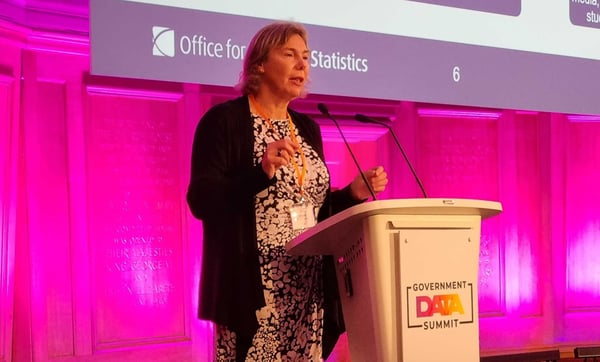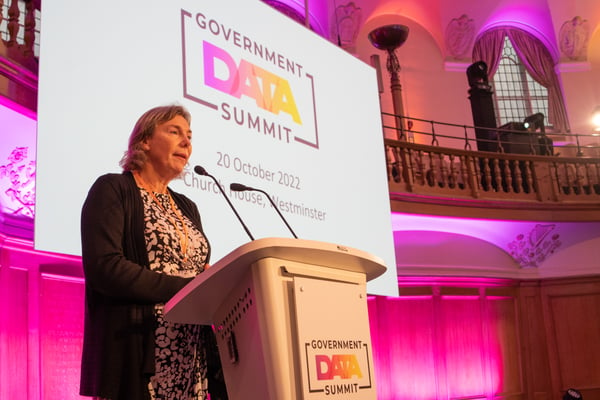The ONS on how to build trust in public data
The key to maintaining high levels of trust in data whilst enhancing understanding and support for new data is to “actively engage the public”, said Fiona James, Chief Data Officer at the Office for National Statistics (ONS), speaking at Big Data & AI World in London last week.
The ONS has an 89% public trust rating - something James attributes to the organisation’s strong emphasis on engagement with citizens, alongside its ability to keep data secure and to use data in a way that informs decisions to improve public services.
“When it comes to gaining trust in data, actions speak louder than words,” she said. “Acceptability in data requires dedicated engagement with communities, particularly as we look to roll-out new ways of integrating data.”
A push for greater public engagement on data comes as the ONS is gearing up to transform its population statistics system by moving to focus on more alternative data sources rather than running a Census every ten years, James announced.
What drives trust?
James highlighted that public views on data use can often be conflicting and individual characteristics are likely to play an important role when understanding the drivers of trustworthiness.
For example, older people tend to have stronger memories at a time where there were less digital devices, leading to a greater appreciation for the convenience that tech brings; whereas younger digital natives may take these benefits for granted.
She said that the public tend to have the strongest associations with data around their own personal data usage, “to the extent that there's really quite a limited understanding of the benefits of aggregating data together.” She added that people often default to concerns around their own privacy, but struggle to articulate the downsides of data usage.
When seeking to engage the UK public on the Census in 2021, James said the ONS took a "diverse and multi-channel approach" in order to capture the perspectives of different people. The organisation leveraged a wide network of partners to engage and educate the public on the impotence of the Census - involving campaigns with social media personalities and celebrities.
The ONS uses a brand survey tool as part of its wider reputation tracking approach, which gives the organisation regular insight into how successful its engagement activities are.
“We've continued to see a really positive growth in public awareness of why we collect data and a trust that we only produce statistics that are relevant for understanding today's society.”
Targeted campaigns
Going forward, the ONS has started implementing a more targeted approach to raising public support around data by focusing on specific groups of people.
For example, having identified those aged 18-24 as having the least amount of interaction with data collection, James said the ONS is seeking to engage further with this demographic to better understand their attitudes.
Additionally, as part of a “more inclusive data path” the ONS are in the process of developing and implementing a charter with research participants, looking at what they can expect from their interaction with data collectors.
Bridging trust and acceptability
“Trust in an organisation does not necessarily translate into strong public acceptability of data for use in for statistical and decision-making needs,” James said.
Research by ONS found regional differences in public acceptability; with the Northeast of England having the highest awareness level of ONS but the lowest acceptability of data. There was also found to be a difference in acceptability between men and women.
James pointed out that there is still work to be done to better understand these differences. However, she added that research consistently shows that clarity on data standards and compliance, combined with transparency on how data is going to be used, have proved to be the “most effective ways to build acceptability of data.”
She said this is why the ONS clearly sets out its intention on data by publishing all of the data that they need to collect on a quarterly basis.
The ONS is also working to develop a common data model across the organisation, with the aim to understand the access that it has from all of the datasets and how they are linking those to the organisation’s outputs.






